Prosthetics have come a long way in the last few decades. Materials have become lighter, components smarter, and designs more adaptive. But despite all these advancements, one part of the prosthesis remains stubbornly problematic — the socket. This is the part that connects the prosthetic limb to the user’s body. It’s where comfort, control, and confidence begin — and unfortunately, where many issues also start.
In many cases, especially with mass-market solutions, people are given what are known as off-the-shelf sockets. These are ready-made designs that are supposed to “fit” most people. They’re fast to make, relatively cheaper, and sound great on paper. But in reality, they rarely deliver on what users truly need — a comfortable, reliable, long-term solution.
Why is that?
The answer isn’t just in the material or the shape. It’s much deeper. Off-the-shelf sockets fail because they ignore the most important part of prosthetic design: the individual.
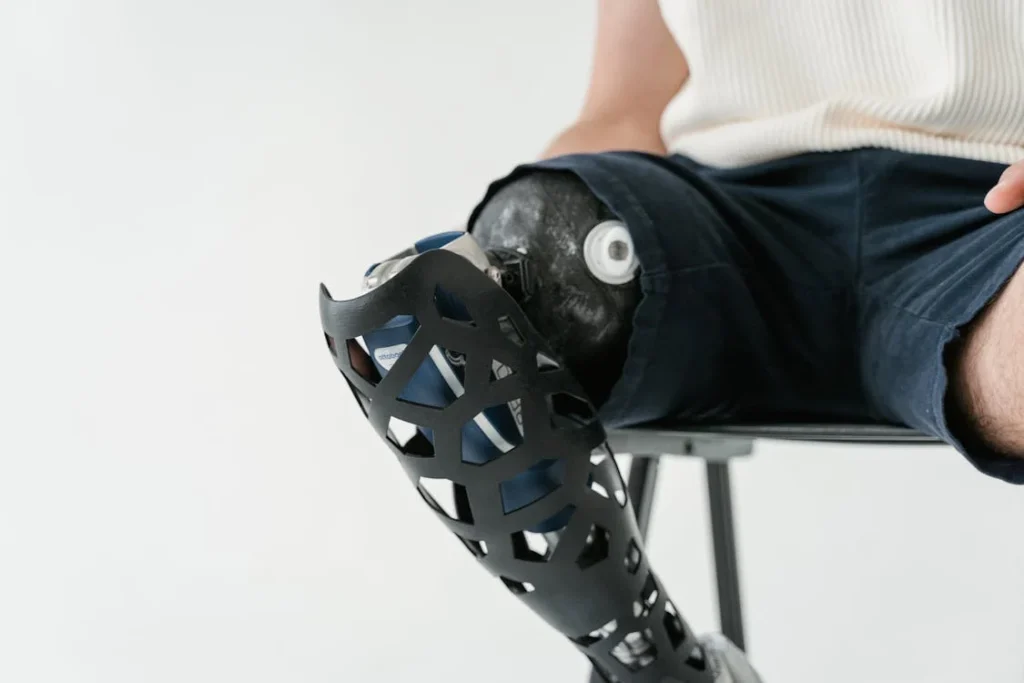
The Problem Starts With Fit
Every Residual Limb Is Different
Every person’s body is unique, and that includes the shape, size, and condition of their residual limb after an amputation. Some people have bulbous residual limbs.
Others may have bony protrusions or soft tissue that shifts depending on swelling, temperature, or movement.
This natural variability is impossible to predict or accommodate with a single design. Yet, off-the-shelf sockets are built on the assumption that a “standard fit” is somehow good enough for most users.
This idea may work for something like a pair of reading glasses or a bicycle helmet, but not for a device that’s supposed to become an extension of your body.
A prosthetic socket is not just a holder. It’s a bridge. It must carry your weight, translate your intention into motion, and move in harmony with your muscles and bones.
If the fit is even slightly off, you start experiencing pain, pressure sores, and discomfort. And over time, your body will change. You’ll lose or gain muscle. Your residual limb might shrink. With a generic socket, there’s no room to adapt.
What happens next is frustration. You start adjusting the way you walk or move to avoid pain. You become less active. Your mobility goes down, and so does your confidence. It’s a domino effect, and it all begins with a socket that was never truly made for you in the first place.
Volume Fluctuations Are a Daily Reality
Even for those with a well-fitted socket, the human body is dynamic. Swelling, heat, fluid retention, and everyday activity cause natural fluctuations in the volume of the residual limb.
One day your limb may be slightly fuller; the next day it may have shrunk. These changes aren’t predictable, and they happen whether you’re aware of them or not.
Now imagine trying to fit your limb into a rigid, non-flexible structure that doesn’t respond to any of these changes. That’s what an off-the-shelf socket asks you to do — every single day.
When your limb swells, it may feel too tight. When it shrinks, it may feel too loose and cause friction burns. Some users try to manage this by using prosthetic socks to fill in the space.
But this is a patch, not a solution. It’s like stuffing newspaper into a shoe that’s too big and hoping it feels okay to walk in.
Over time, this inconsistency affects not only your comfort but also your safety. Falls, instability, and gait changes become more common.
You begin to trust your prosthesis less, not because the limb itself is faulty, but because the socket never really knew how to support you.
One-Size-Fits-All Is a Myth
Off-the-Shelf Sockets Are Designed for Speed, Not Precision
Mass production is all about efficiency. It works well when you’re making phones, shoes, or headphones. But it doesn’t work when you’re trying to recreate a human connection point.
Off-the-shelf sockets are created with a basic template and then offered in sizes like small, medium, or large.
Sometimes a bit of heat is used to mold the socket to the limb during fitting. But even with some customization, the foundation is still generic. It’s like trying to build a house on sand and then wondering why it doesn’t hold up in a storm.
A prosthetic socket should be the most customized part of the prosthesis. It must match your residual limb like a glove. That requires time, attention, and understanding of your body’s structure.
It also requires listening to you — your pain points, your goals, your lifestyle. An off-the-shelf socket doesn’t have ears. It doesn’t learn. It doesn’t change.
In most cases, these sockets are delivered quickly, and the initial feeling might even seem okay. But after a few days or weeks, the reality sets in.
Discomfort builds. Pressure points form. Users start skipping wear time. Some abandon the prosthetic limb altogether. Not because they didn’t want to walk or move, but because their body said no.
The Body Fights What Doesn’t Belong
Your body is incredibly intelligent. When something doesn’t feel right, it reacts. That could mean inflammation, swelling, or pain. In the case of off-the-shelf sockets, this reaction is common.
Even if the socket is functional, your body knows it wasn’t made for it. That internal resistance leads to constant strain on your skin and tissue. Users often suffer from blisters, abrasions, and deep sores, especially on bony areas or high-pressure zones.
This isn’t just a matter of discomfort. It can lead to infections and long healing times, which means more time without mobility and greater risk of mental stress.
For people who are trying to regain independence, this is a cruel cycle. Every setback from a poor-fitting socket feels like going back to square one.
You shouldn’t have to fight your own prosthesis. But when it doesn’t respond to your body, that’s exactly what happens. Off-the-shelf sockets are silent opponents.
They push where they shouldn’t and don’t support where they should. Over time, this battle wears you down — physically and emotionally.
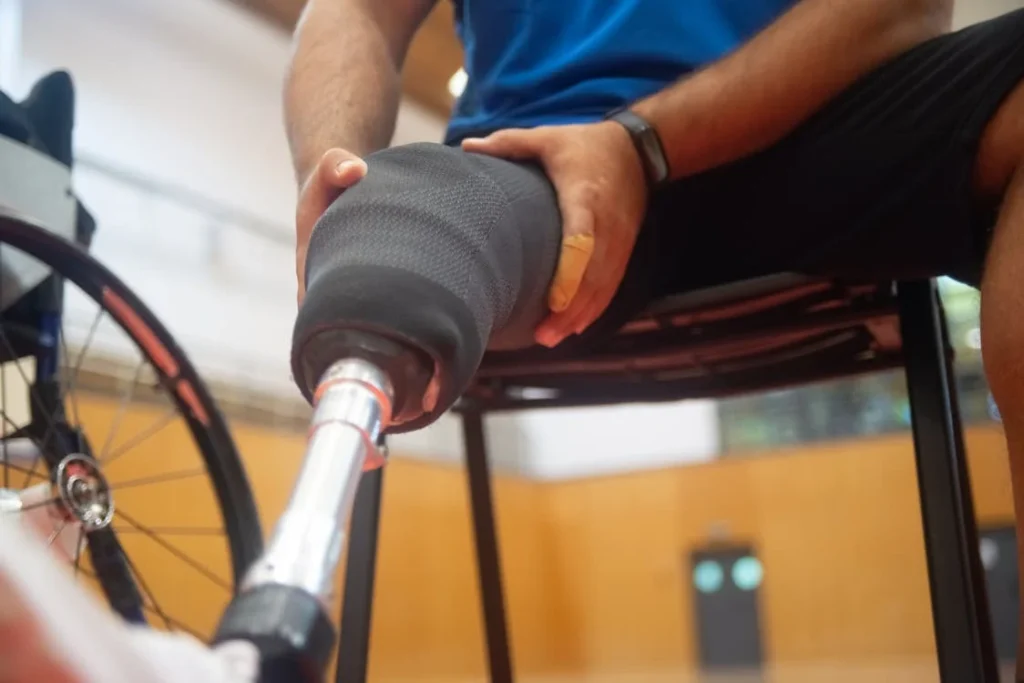
Poor Suspension Leads to Poor Confidence
Loose Sockets Break the Mind-Body Connection
The socket is the anchor. It’s what holds the prosthetic limb to your body and transfers your movement into action. But when that anchor is loose or ill-fitting, the connection breaks.
You might feel your limb slipping when you walk. There may be a delay between when you move your muscles and when the prosthesis responds. That slight lag can be unnerving. It chips away at your confidence.
When a person lacks trust in their prosthetic socket, they start limiting themselves. They walk slower. They avoid stairs. They stop running.
The idea of going out, exercising, or even navigating a crowded space becomes stressful. Your mind knows you’re not fully secure, and so it compensates by shrinking your world.
This is not just about mechanics. It’s psychological. Feeling unsteady can be as dangerous as actually being unsteady. And with every slip or misstep, your mind logs a warning.
Over time, that builds into a fear of movement, which can lead to a more sedentary life, weight gain, joint pain, and isolation. All of this — because the socket wasn’t made to stay firmly attached.
With off-the-shelf sockets, this issue is more common than most manufacturers will admit. These sockets often rely on suction, pin-lock, or sleeve-based systems.
But if the inner shape doesn’t conform perfectly to your limb, no suspension system will work consistently. It’s like trying to glue something to a surface that isn’t flat. The hold never lasts.
Movement Should Feel Natural, Not Calculated
Think about how you walk, how you shift your weight, how you reach for something on a high shelf. None of those actions are planned. Your brain does it all without thinking.
That’s the beauty of body awareness. But with an off-the-shelf socket, your movement becomes something you have to think about constantly.
You start planning each step, wondering if the socket will stay in place. You brace for discomfort before you sit or stand. You learn to avoid certain angles because you know they’ll cause pinching or slipping.
You don’t move freely anymore — you move cautiously. That’s not how it’s supposed to be.
A well-designed custom socket becomes part of your body. You forget it’s even there. But when the socket isn’t made for you, it never disappears from your awareness.
It’s a constant reminder that something isn’t right, and that affects how you experience your own body. That disconnect between the brain and the limb becomes a barrier to progress, confidence, and comfort.
Comfort Isn’t a Luxury — It’s the Foundation
Pain Changes How You Live
Let’s talk about pain, because it’s a silent killer of motivation. When your socket causes pain, your brain starts creating associations between activity and discomfort.
This changes your behavior without you even realizing it. You walk less. You rest more. You start saying “no” to things you used to enjoy, not because you want to, but because the pain tells you it’s not worth it.
Some users try to tough it out. They believe discomfort is just part of the deal with prosthetics. That mindset is dangerous.
It leads to long-term wear and tear on the body, joint damage, and psychological fatigue. You shouldn’t have to endure pain just to live your life.
Off-the-shelf sockets often put pressure in the wrong places. They might dig into soft tissue or press against nerve endings. Some users develop skin breakdown, bruising, or even ulcers.
These issues don’t just cause discomfort — they interrupt life. You may need to take breaks from wearing the prosthesis altogether, which sets back your physical progress and mental momentum.
Pain is not just a signal. It’s a message. And when your socket keeps sending that message every time you wear it, your brain listens. It tells you to stop.
And slowly, without realizing it, you withdraw from activity, from people, and from the life you were trying to rebuild.
Good Fit Creates Long-Term Success
When you have a socket that fits like it was made for you — because it was — everything changes. You don’t think about walking, you just walk.
You don’t worry about sitting, standing, or climbing stairs. You feel like your body is working as a whole again, not in parts. That kind of confidence fuels progress.
Physical therapy becomes easier. Your muscles adapt faster. Your posture improves. You move more. And movement becomes joy, not a challenge. That’s when real recovery happens.
Not just physically, but emotionally too. You start saying yes more often. You return to work, to school, to social life. You stop seeing yourself as someone with a limitation and start seeing yourself as whole again.
But none of that happens with a socket that doesn’t understand you. Off-the-shelf sockets don’t have empathy. They don’t adjust when your body changes.
They don’t care if you’re in pain. That’s why they fail — not because the technology is bad, but because the design forgets the human at the center.
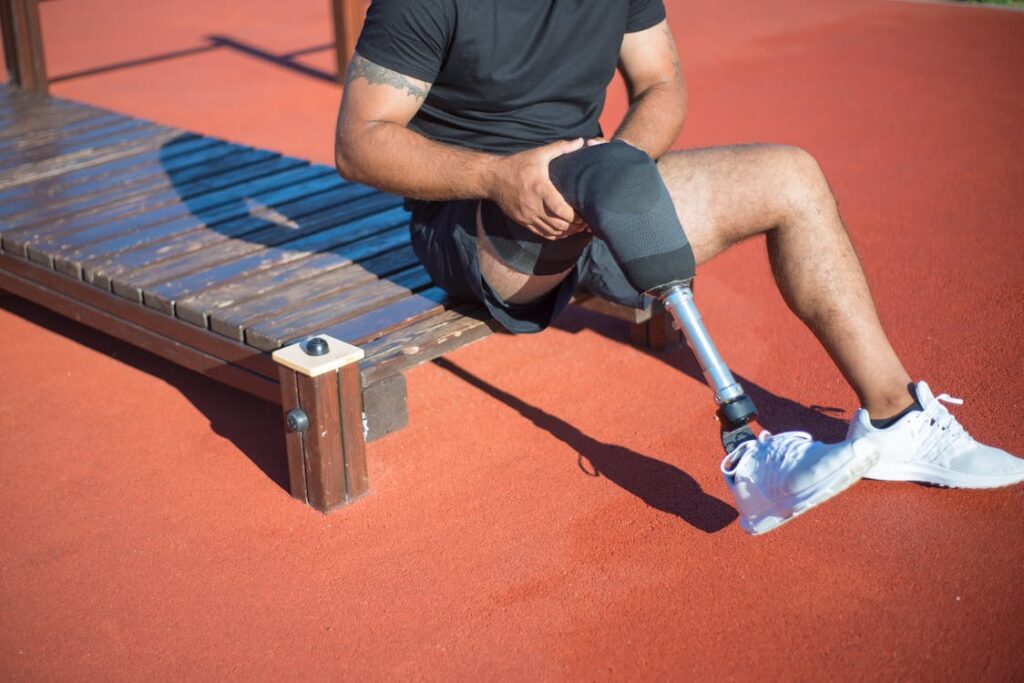
Long-Term Health Risks Are Often Ignored
Misalignment Impacts the Entire Body
When the socket doesn’t align well with your body, it doesn’t just affect the point of contact — it affects everything else too. Your body is a system.
When one part is out of balance, the rest adjusts to compensate. If your socket is tilted or rotates even slightly with each step, your knees, hips, and spine take on unnatural loads.
Over time, this causes real damage. You might start feeling pain in your lower back or your unaffected leg. Your gait may become uneven, leading to muscle tightness or fatigue.
Joints that were previously healthy can begin to wear down much faster, especially if you’re walking with a limp or favoring one side.
Off-the-shelf sockets don’t account for these micro-adjustments your body makes. They can’t. They’re built to a template, not to the subtle angles and shifts unique to your body.
When you wear something every day that is even a few degrees off in alignment, those small errors build up into chronic issues.
Eventually, many users of ill-fitting sockets find themselves visiting physiotherapists or orthopedic doctors, not for the residual limb, but for secondary problems caused by the way the socket interacts with the rest of their body.
It’s a silent chain reaction, and most people don’t even connect the dots until it’s too late.
Skin Problems Become Chronic
Your skin is not designed to take pressure and friction for hours on end, especially in sensitive areas. But with off-the-shelf sockets, this is exactly what happens.
Users often report constant rubbing, heat buildup, and sweaty conditions that make the socket harder to wear throughout the day.
These issues might seem minor at first — a bit of redness here, a small blister there. But without relief or adjustment, these small irritations become open wounds.
They get infected. They require dressing. In some cases, people are forced to stop wearing their prosthesis altogether until the skin heals, which can take days or even weeks.
During this downtime, your muscles weaken, your balance suffers, and your progress reverses. And when you return to the same poorly designed socket, the problem starts again.
It’s a cycle that leads many users to give up on prosthetics entirely, especially in lower-income or remote regions where follow-up care is hard to access.
A custom-fit socket, by contrast, distributes pressure evenly. It reduces shear forces. It allows airflow. It respects your skin and adapts to your body’s contours, making injuries far less likely.
Emotional Burnout Is Real
Constant Adjustments Create Mental Fatigue
When a user wears an off-the-shelf socket, they are constantly adjusting their behavior to manage discomfort. They think about how to walk, how to sit, when to take off the limb, how many socks to add or remove.
These aren’t small concerns — they occupy a large portion of daily mental energy.
Over time, this becomes exhausting. You’re never fully relaxed because a part of you is always monitoring your prosthesis.
You might find yourself avoiding long trips, refusing spontaneous outings, or turning down job opportunities that require too much movement.
This is emotional burnout, and it hits hard. People who were once excited about their prosthetic journey slowly lose hope. They become discouraged.
Depression and anxiety can follow, especially if they feel they’re falling behind or not making the progress others seem to make.
The saddest part is that this burnout is often misinterpreted. Friends or family might think the person is being lazy or unmotivated. But the truth is simpler: their socket is failing them, and it’s draining their energy every single day.
Feeling “Different” All the Time
An off-the-shelf socket often feels like a foreign object. It doesn’t move with your body. It doesn’t feel like part of you.
That disconnect is more than just physical — it’s deeply emotional. You’re constantly reminded that something is not quite right, and this keeps you from feeling fully yourself.
Wearing a prosthesis should help you regain your identity, not make you feel more distant from it. But when the socket doesn’t fit, it reinforces the idea that you’re different — not in a way that empowers you, but in a way that isolates you.
This psychological barrier can stop people from wearing shorts, from swimming, from dancing, or from taking pride in their movement.
They may cover up their prosthesis, not because of shame, but because the socket looks and feels like a machine part, not a body part.
In contrast, a socket made specifically for your limb, shaped with care and intention, becomes part of you. It’s something you wear with confidence, not because it disappears, but because it belongs.
The Industry Has to Do Better
Quick Fixes Are Not the Answer
There’s a growing trend in the prosthetic industry to speed up fittings. Clinics push ready-made solutions, especially in high-volume settings or government programs.
It’s easier, cheaper, and faster to hand over a socket that’s “good enough” than to spend weeks customizing one.
But quick fixes come with long-term costs. Patients return with complications. Adjustments take more time. The overall outcome is worse.
And when users are unhappy, they stop coming back, which leads to lost follow-up and reduced long-term care.
If the goal is to help people regain function and independence, then cutting corners at the socket stage is one of the worst mistakes you can make. It’s like building a beautiful house on a weak foundation. Eventually, it crumbles.
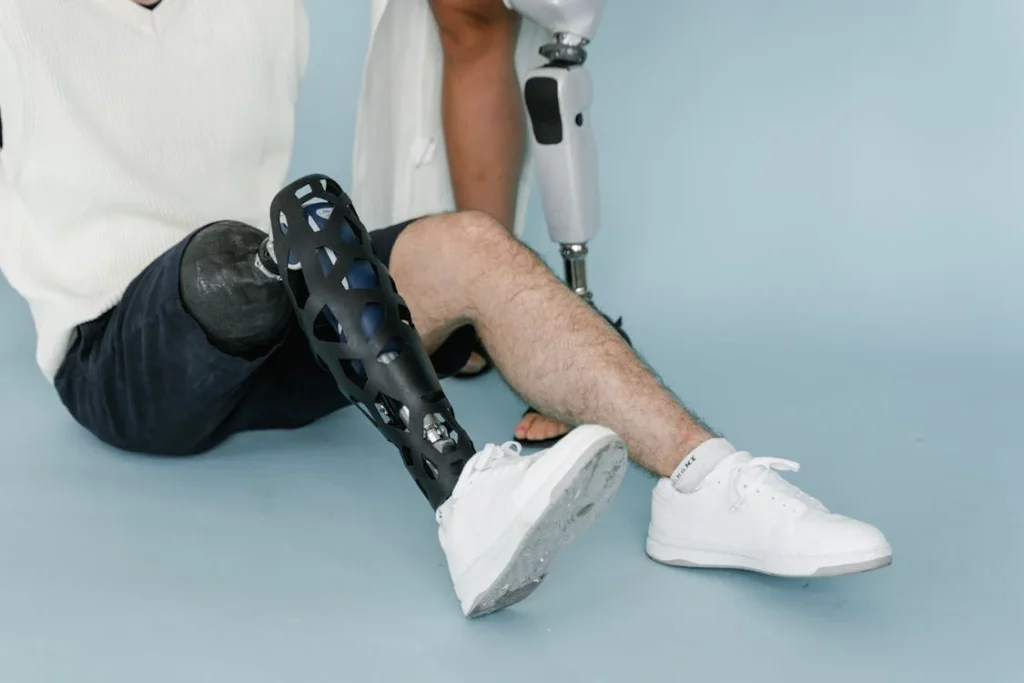
Custom Sockets Aren’t a Luxury — They’re a Necessity
Understanding the Role of Craftsmanship
The process of creating a custom socket is part science, part craftsmanship. It’s not just about taking a mold and pouring material into it.
It requires an experienced eye to assess pressure zones, movement patterns, and the user’s day-to-day lifestyle. It means asking questions, watching the way someone stands or shifts weight, and noticing small cues in body language that reveal where discomfort may arise.
Every socket must be fine-tuned to not just the shape of the limb but also how that limb changes throughout the day. Some people have residual limbs that swell in the afternoon or shrink after exercise.
Others have sensitive scar tissue or underlying nerve pain that flares up with heat. These details are never captured by an off-the-shelf solution.
A well-crafted custom socket becomes an extension of the prosthetist’s care. It reflects hours of adjustment, precision, and empathy. It might take a few fittings.
It might need refinements even after delivery. But the result is something that feels like it belongs. It doesn’t demand constant attention. It quietly does its job while the user focuses on living their life.
This level of detail and care is what changes outcomes. People walk farther. They move more confidently. They smile more. The socket doesn’t become the reason for setbacks — it becomes the reason for progress.
Accessibility Must Meet Individual Needs
In many countries, especially where resources are limited, the idea of a custom socket is seen as a premium option — something reserved for the wealthy or for private hospitals. Public clinics often default to mass-produced designs because of budget limits or logistical challenges.
But this doesn’t mean users don’t need or deserve better. In fact, those who rely on their prosthetic limbs for essential mobility — like traveling to work, running a small shop, or caring for their families — are often the ones most harmed by a poor fit. They wear the socket every day, all day. And they suffer the most when it fails.
The industry must recognize that accessibility does not mean compromise. Instead of offering off-the-shelf solutions as the only option, clinics and providers need to invest in processes that allow for basic customization, even within limited budgets.
Technologies like 3D scanning, modular socket kits, and adjustable liners can make a difference when used with thought and care.
Even low-cost solutions can be designed around the individual if the right systems are in place. What’s needed is a shift in thinking — from seeing people as patients to seeing them as partners in the process.
When you include the user in the decision-making, the result is almost always better. They speak up about what hurts. They share when it’s working. And together, the outcome improves.
The Future of Prosthetics Demands Personalization
Technology Can’t Replace Human Understanding
The prosthetics field is buzzing with innovation. From smart knees to AI-assisted gait correction, there’s no shortage of excitement.
But in all of this, one thing must stay clear: a great prosthesis is only as good as the socket that holds it in place.
You can have the most advanced microprocessor knee in the world. But if the socket is causing blisters or wobbling with every step, none of that technology matters.
The base must be strong, stable, and personal. It must match not only your limb, but also your life.
Technology can assist with this. 3D printers can help produce molds faster. Digital scans can capture more detail than plaster casts.
Pressure mapping can identify problem zones. But none of this replaces the need for human touch — the conversation between prosthetist and user, the careful observation, the follow-up.
A successful prosthetic journey depends on personalization. Not just in hardware, but in approach. It’s about seeing the whole person — their goals, fears, habits, and hopes — and designing something that supports all of it.
Design for Dignity, Not Just Function
Too often, prosthetic sockets are built for function alone. They’re mechanical in appearance, hard-edged, and impersonal.
But a prosthesis is more than a tool. It’s a part of your body. It carries your clothes, supports your posture, and becomes part of how the world sees you.
Design matters. A well-shaped, aesthetically pleasing socket boosts confidence. It helps people see themselves as complete, not broken.
Some users want colors, textures, or even artwork on their socket. Others prefer simplicity and minimalism. The point is not the style — it’s the choice.
Off-the-shelf sockets don’t offer this. They offer uniformity. But no person is uniform. Everyone has their own story, and their prosthesis should reflect that.
When you give people control over their socket — its shape, feel, and look — you give them a sense of ownership over their mobility journey. That ownership builds pride. And pride fuels perseverance.
A beautiful socket that fits well becomes something you show off, not something you hide. It becomes a symbol of resilience, not a reminder of loss.
That emotional shift has deep, lasting effects on how people carry themselves — and how far they’re willing to go.
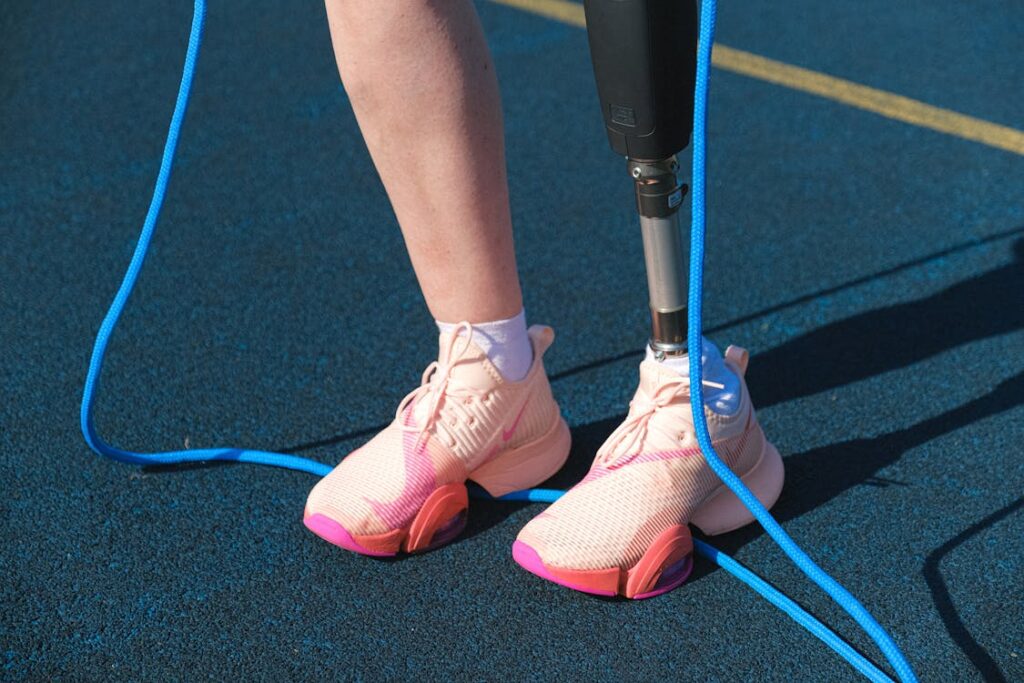
Listening to the User Is the Most Important Step
The Experience of the Wearer Comes First
When a socket fails, it’s not always obvious why — especially to someone who hasn’t worn one. Prosthetists, engineers, or technicians may look at a socket and see a well-made piece of equipment.
The materials are durable. The alignment looks correct. The suction system is functioning. But the person wearing it may be in pain, or uncomfortable, or unsure.
This disconnect happens when the user’s voice is ignored or not prioritized. People might say things like “you’ll get used to it,” or “that’s normal in the beginning.” But those comments often overlook a critical truth: if something feels wrong, it probably is.
No one knows a limb better than the person who lives with it. If they say it pinches when they walk, that’s not an opinion — it’s a fact. If they say the limb feels loose at the end of the day, that’s a problem worth solving.
The best prosthetists are the ones who listen deeply, ask follow-up questions, and are willing to revisit their design even if it delays delivery. That mindset — where the user is the expert — leads to better results every time.
Off-the-shelf sockets are often handed out without this kind of conversation. They’re presented as “done” the moment they’re delivered. If issues arise, the options are limited.
There may be small adjustments, or extra socks added, but rarely is there a willingness to go back to square one. That’s because the off-the-shelf model is built for speed and volume, not feedback and refinement.
The end result? The user ends up adjusting to the socket instead of the socket being adjusted to the user. And that imbalance is at the heart of why so many prosthetic journeys get derailed.
Comfort Is Subjective — and That’s Okay
Everyone has different pain thresholds, different comfort zones, and different preferences for how something should feel. One person may prefer a snug, almost tight fit for stability.
Another might need a slightly looser socket because of pressure sensitivity or past trauma. These preferences can’t be captured in a template or measured with a scanner alone.
That’s why comfort must be treated as a moving target. It changes with experience, with daily activity, even with mood.
A new user might need more padding and soft edges. A more active user may want a lighter, tighter interface. A child may need space for growth. An elderly person might want softness above all else.
Off-the-shelf sockets don’t have room for these variables. They’re designed for average use, average shape, average life. But no one lives an average life. And no one should be forced to live within average limits.
The only way to design for real comfort is to build a relationship with the user. To try something, test it, talk about it, and tweak it.
To allow space for preferences to change and evolve. This is not inefficient — it’s respectful. And in the long run, it saves time, money, and frustration.
A Better Path Forward
Education and Advocacy Can Close the Gap
For many users, the world of prosthetics is unfamiliar and overwhelming. They don’t always know what to ask for, what their rights are, or what a good fit should feel like.
They trust their providers, and in many cases, that trust is well-placed. But sometimes, users are given subpar solutions simply because they don’t know there’s something better.
Education can change this. When users are informed about what a good socket should do — how it should feel, how it should respond to movement, how it should support their body — they can advocate for themselves.
They can speak up when something doesn’t feel right. They can ask for second opinions or insist on a review.
Clinics and prosthetists also have a role to play. By making education part of the fitting process, they empower users instead of keeping them in the dark.
They turn a transaction into a partnership. And that shift leads to better results for everyone involved.
At Robobionics, we believe in this model deeply. We don’t just deliver prosthetics. We deliver guidance, support, and a listening ear. Because no piece of technology, no matter how advanced, can replace human connection and trust.
It’s Time to Redefine Success
In the prosthetics world, success is often measured in simple terms. Can the user walk? Can they climb stairs? Are they mobile enough to perform basic tasks? But these standards miss the point. They’re minimal, not meaningful.
Real success is when a user says, “I forgot I was wearing it.” Or, “I went for a walk today without worrying about pain.” Or even, “I wore shorts because I finally feel good about how it looks.” These statements show that the prosthesis isn’t just functional — it’s freeing.
Off-the-shelf sockets rarely lead to this kind of success. They might check the basic boxes, but they leave too many stones unturned. They ignore the emotional, psychological, and long-term health aspects of prosthetic use. And in doing so, they limit what’s possible.
To redefine success, we must raise the bar. We must aim not for acceptance, but for delight. Not for tolerance, but for trust. And not for standard solutions, but for deeply personal ones.
That’s the promise of custom socket design. It’s not a luxury. It’s not a premium option. It’s the only path that truly honors the user’s journey.
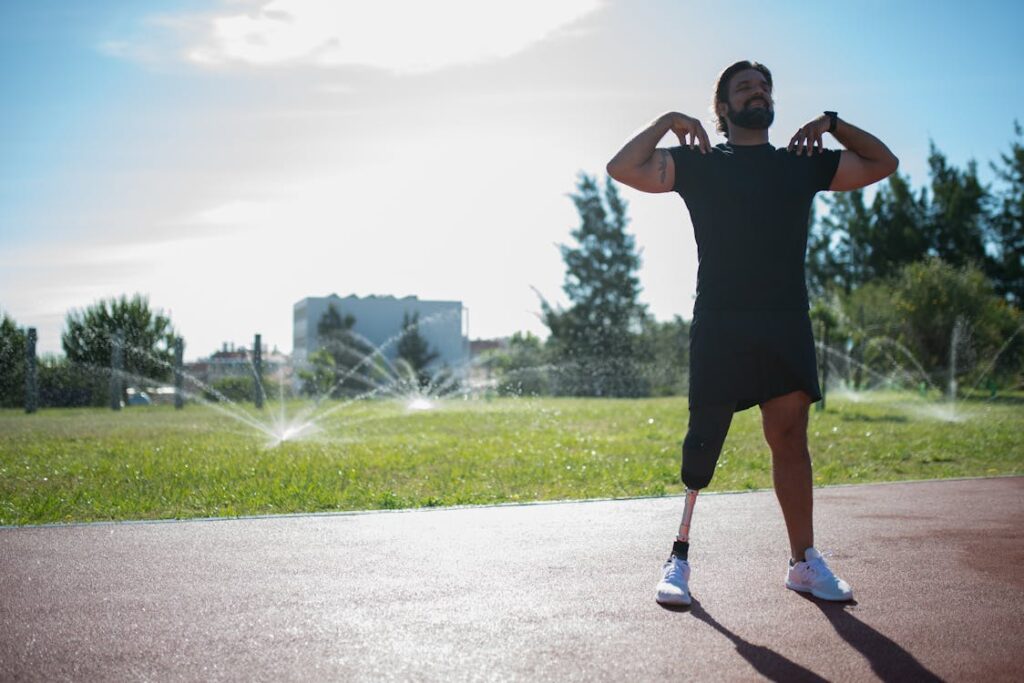
The Final Truth: People Deserve Better
Moving Beyond the Minimum
The real problem with off-the-shelf sockets isn’t just technical — it’s philosophical. It’s about settling. It’s about saying, “this is good enough,” when deep down, we know it’s not. It’s about placing convenience over care, efficiency over empathy, and standardization over individuality.
People who have gone through limb loss or difference have already experienced a life-altering change. They’ve faced pain, surgeries, and often, emotional trauma.
The least we can do as an industry — and as a society — is give them solutions that honor that journey, not ones that ignore it.
A socket isn’t just plastic and padding. It’s the interface between a person’s body and their freedom. If it doesn’t fit, nothing else will work. And if we don’t get that part right, we’ve missed the point entirely.
Choosing the Better Path
For clinicians, the challenge is to resist the easy path and choose the right one. That might mean longer consultations, more fittings, and fewer shortcuts.
But it also means better outcomes, stronger trust, and lifelong relationships with users who feel seen and supported.
For users, the challenge is to speak up. To ask questions. To demand comfort. To know that if a socket doesn’t feel right, it probably isn’t. And to believe that there is something better out there — because there is.
And for policymakers, the challenge is to fund systems that support custom solutions. To stop rewarding speed over quality.
To ensure that every person, no matter where they live, has access to a prosthetic experience that uplifts, not undermines.
At Robobionics, we’re doing our part. One socket at a time. One story at a time. One step at a time.
Conclusion
There is no such thing as a typical body, a standard journey, or an average user. Every person has a story, a shape, a rhythm. And a prosthetic socket should honor that story — not force it into a mold.
Off-the-shelf sockets fail because they forget the human being. They forget that movement is personal. That pain is not normal. That freedom is the goal. And that goal can only be reached when the foundation is built with care, with attention, and with purpose.
If you’re someone navigating life with a prosthesis, know this: you deserve more than a fit that “sort of works.” You deserve to walk without pain. To move without thinking. To live without limits.
And if you’re a provider, know that every socket you design is more than just a tool. It’s a lifeline. Get it right, and you change someone’s world.
Off-the-shelf may seem easier. But easy doesn’t last.
Only what’s made for you, lasts with you.



